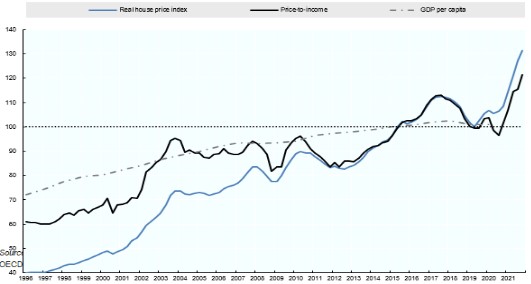by Robert Hamilton
In this essay, I will be describing and explaining how everyday sexual experiences are now often accessed through the Internet by a broad cross section of community members in our developed western countries. I will be showing that the Sex Industry, in all its multitude forms, has embraced the Internet more fully and effectively than any other industry. I will also be illuminating the links that show the Internet to be an active agent in diminishing the power of sexual taboos by exposing more people to a greater variety of depicted sexual experiences and information. The Internet as a tool of communication and information has greatly increased accessibility to a much wider range of sexual choices and therefore fostered growing sub-communities, who base their exchanges on these shared peccadilloes and interests. Finally, I will be positing information which may suggest the Internet, and its visually arresting relationship to sex in our lives, has been a force for good in the reduction of sex crimes within our communities.
When looking at the Internet’s effect upon pornography, and its utilisation by the consumer, it is and has been clearly shown to be one of the most popular activities enjoyed online. The most recent research, by Online MBA (1), estimates that 12% of all sites on the World Wide Web are sexual in content. The amount of time and money being spent on Internet based sexual activity is simply huge. The technological leap, which has enabled the shift from pornography appearing in printed magazines to pornography displayed online, has clearly made explicit sexual content more accessible to a far greater percentage of the community. According to the 2008-09 Multipurpose Household Survey, by the Australian Bureau of Statistics, 72% of Australian households had home Internet access(2).
The Internet makes pornography far more vivid, and also more importantly, brings the ‘dirty movie’ experience home into the privacy of your living room. This means that the consumer can enjoy the many Internet based pornography applications without having to obviously expose themselves as a pornography user –risking the clichéd identity of ‘dirty old men in raincoats.’ The rampant availability of sexual content on the Internet means that the use of pornography as a stimulant no longer needs to be supported by premeditated behaviour, like going to the newsagency to purchase sexually explicit printed material. Wanking has never been so spontaneously supported for so many thanks to technology, which for men has some health benefits – according to a study reported in the Journal of American Medicine(3).
In many cases Internet pornography is also now free (4) to the consumer; this is in contrast to the Sex Industries pre-Internet model, where pornography was relatively expensive for the end user, having to buy videos and magazines (5). This has provided an economic stimulus for the rise in pornography consumption among wealthier communities, with Internet access.
Feona Attwood (2007, 441-456) has also shown in her article No Money Shot? , that the Internet has broadened the public consumption of pornography, by servicing new sub-sections or niche categories. No longer is porn just ‘hard core’, showing images of genitalia and penile ejaculations into the faces of various ‘overly made-up’ models, stuff made for the more clearly defined, traditional, masculine porn consumer. It now encompasses softer porn images involving models, who display identification with certain sub-groups within the community; like emos, Goths and others who sport tattoos, dyed hair and piercings. This is fostering the enjoyment of pornography by members of the community who have traditionally shunned it. Lesbian pornography seems to be enjoyed both by homosexual women and by men, as can be seen by the content on many of these supposedly specialist sites (7). Other groups like vegans and vegetarians (8) have their own porn sites, demonstrating a far more natural or crunchy look in the way their models are portrayed. These sites share a disdain for the depiction of stereotypical models with are ‘blondes with big tits’, which are the ‘meat and potatoes’ of the more common porn sites (9).
These niche porn sites are usually membership based, charging a small monthly fee to access the full gamut of applications on offer. Members are also invited to submit sexual images of themselves to be paraded on the site, some sites offering rare financial inducements to do so (10). Many of these sub-genre type sites have ‘dating site’ like applications for their members, where they can post personal blogs and forum like comments about each other’s posts (11). The Internet also offers sites that are more like, online magazines, but with a solid sexual orientation as well, bringing sex back into the fold, so to speak. Censorship laws (12) relating to the sale of printed media containing explicit sexual material would have contributed to the isolationist state of affairs that we had in the world of old media – where very few publications could afford to combine culture with sexually explicit images(13), as their sales were restricted to overage consumers and community attitudes to pornography have traditionally been very harsh – due to the ‘wowserish’ influence of religious groups (14).
The rise in public consumption of Internet pornography has also shown, in certain studies, to have accompanied a decline in the incidents of reported rape (Kendall, Todd; 2006, 2). This correlation may show that consumption of Internet porn, by some likely transgressors of sexual criminal laws, may indeed satisfy their carnal appetites and prevent them from acting them out in ‘real life’. Of course conversely there are also numerous calls in the media linking the Internet, in particular to child sex offences, and there are studies which seem to indicate that the Internet is definitely a place where ‘grooming’ of potential targets happen (Wortley, Richard; 2006, 192). The commonly held idea, that for certain small sections of the community, repeated exposure to depictions of violent and degrading sexual activity encourages a dehumanising effect and may contribute to their involvement in carrying out real crimes of sexual violence, has not been clearly substantiated (15).
Drawing to a close, I would hope that I have, in the brief space so defined by this essay’s length, indicated and in places demonstrated the enormous level of sexual activity taking place over the Internet today, in our technologically advanced western societies. Sex is big business within our communities, it is a major preoccupation for both individuals and societies, but it also has a great history of obfuscating itself and I would posit that the Internet is putting an end to that. Sex has been an activity, which traditionally took place behind closed doors and under the sheets, and now the Internet blurs the boundaries of private and public space. When sitting at home in front of your computer screen, perhaps masturbating to, sexually explicit images of someone else, being beamed around the planet from that person’s webcam – is that a private sexual experience or a shared public sexual experience? The Internet, I think, poses many questions that will ultimately change the way we view sex itself.
Notes
- http://www.onlinemba.com/blog/stats-on-internet-pornography/
- As of June 2009, just over five million households had broadband, according to figures released today by the Australian Bureau of Statistics (ABS).This is an increase of 700,000 households or 16% on the previous year – nearly two-thirds (62%) of all households now have broadband.The Australian Capital Territory continues to have the highest proportion of broadband connections, with nearly three-quarters (74%) of ACT households now connected. Lowest is Tasmania, at just under half (49%).There are 6.4 million households with a computer; 5.9 million of these have internet access. This is an increase of 4.8 million connected households since 1998.The ABS also found that households with children under 15 were more likely to have broadband access (77%) compared to households without (56%).Nearly three-quarters (73%) of children accessed the internet from home, and almost one-third (31%) had their own mobile phones.Children used the internet for educational activities (85%) and playing on-line games (69%). About half of older children (48%) used the internet to visit social networking sites and a further quarter (24%) created their own on-line content such as blogs or websites.An estimated 72,000 children experienced personal safety or security problems on the internet, while 28,000 children had similar problems while using mobiles.
Further details are available in Household Use of Information Technology, Australia 2008-09 (cat. no. 8146.0).
This page last updated 5 February 2010
- ORIGINAL CONTRIBUTIONS: http://jama.ama-assn.org/cgi/search?fulltext=ejaculation+prostate&quicksearch_submit.x=13&quicksearch_submit.y=11
Michael F. Leitzmann; Elizabeth A. Platz; Meir J. Stampfer; Walter C. Willett; Edward Giovannucci
Ejaculation Frequency and Subsequent Risk of Prostate Cancer
JAMA, April 7, 2004; 291: 1578 – 1586.
……associated with risk of advanced prostate CONCLUSIONS: Our results suggest that ejaculation frequency is not related to increased risk of prostate cancer. | Division of Cancer…Adult Aged Aged, 80 and over Ejaculation Follow-Up Studies Health…… - pornhub.com.au
- http://www.brisbanetimes.com.au/entertainment/your-brisbane/being-a-porn-star-aint-what-it-used-to-be-20100303-pj5m.html
- http://www.law.stanford.edu/display/images/dynamic/events_media/Kendall%20cover%20+%20paper.pdf
- http://www.lesbilicious.co.uk/ http://galleries.girlsfuckeachother.com/vids/couple-of-lesbian-pussies-for-pleasure/1777096-3.html
- vegporn.com
- http://www.redtube.com/
- http://suicidegirls.com/model/
- http://www.nerve.com/toolsofattraction
- Playboy Magazine; Penthouse Magazine.
- http://www.aph.gov.au/library/intguide/sp/censorship_ebrief.htm
- http://www.porn-free.org/masturbation.htm
- http://www.the-scientist.com/article/display/57169/;jsessionid=7BB37434E9784C903CC2755600B0A580
References
Attwood, F. (2007). No Money Shot? Commerce, Pornography and New Sex Taste Cultures. Sexualities, 10(4), 441-456. doi: 10.1177/1363460707080982.
Todd D. Kendall (2006). Pornography, Rape, and the Internet. Clemson University, The John E. Walker Department of Economics.
Wortley, Richard; Stephen Smallbone (2006). Situational Prevention Of Child Sexual Abuse, Volume 19 of Crime prevention studies. Criminal Justice Press. p. 192. ISBN 1881798615.












